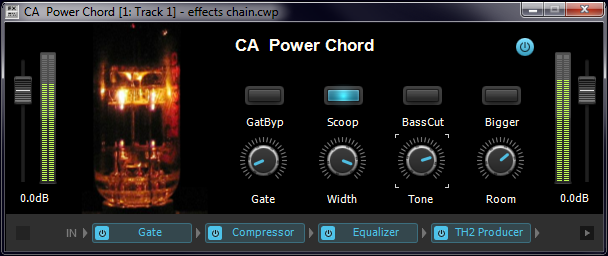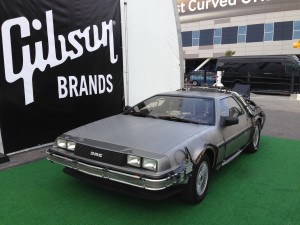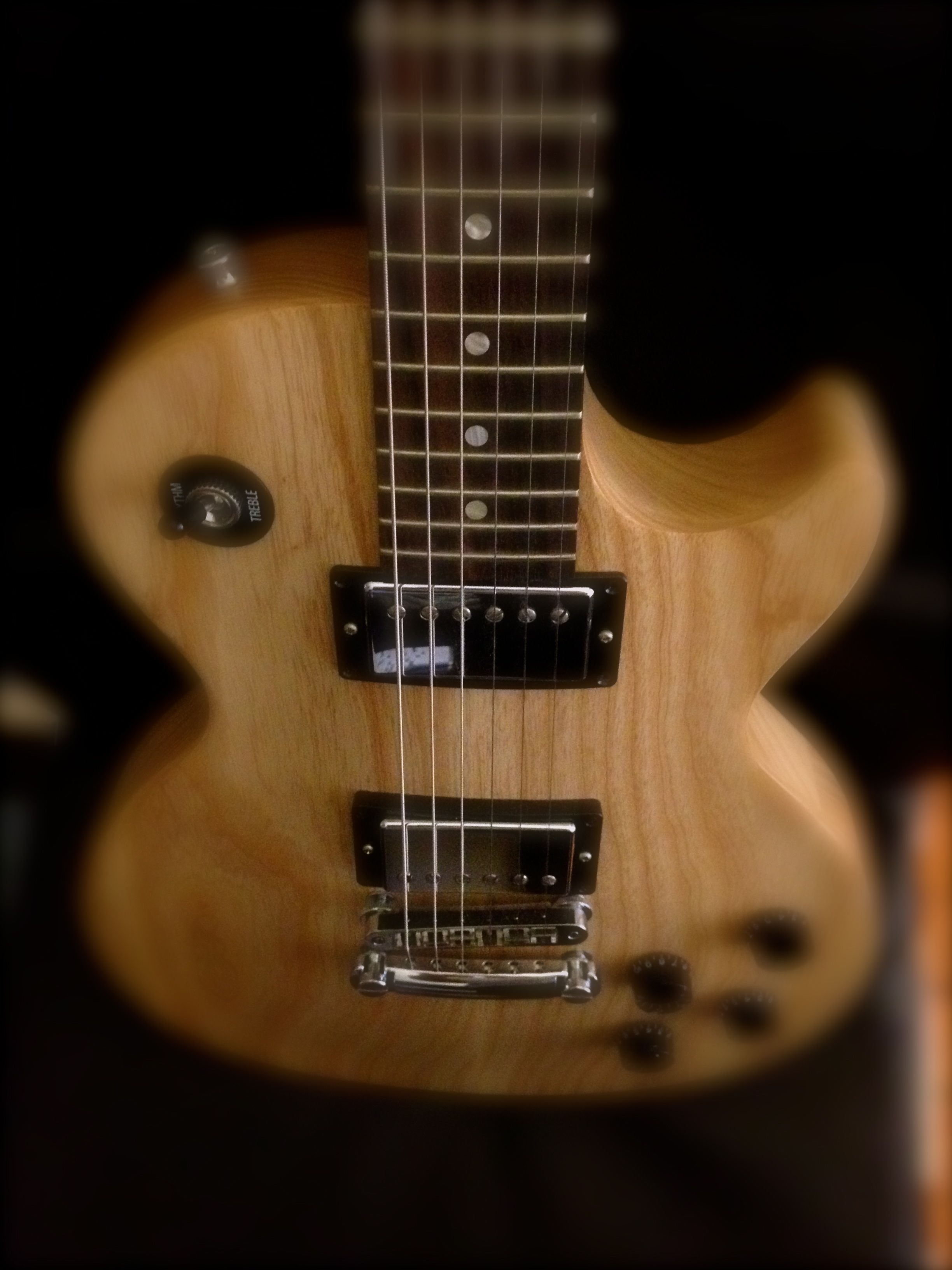And not just that, but virtual “Nashville tuning” too…and 18-string guitars…with lots of audio examples!
by Craig Anderton
One of the reasons I got into Gibson’s newer guitars is because of the way they implement hex outputs (i.e., each string has its own audio output). Although Gibson isn’t the only company that makes guitars with hex outs, they’ve taken the concept seriously and keep improving on it.
This all started with the HD.6X-Pro back in 2007 (the guitar that’s been in my avatar all these years!), which used a magnetic pickup; since then, the Dark Fire, Dusk Tiger, Firebird X, and Les Paul X have all had hex outs based on piezo pickup technology. The X-series guitars are my favorites, because they’ve increased the isolation between strings by reducing crosstalk even further.
 The obvious use for hex outputs is hex processing, like the kind of super-clean, almost synth-like sound you get from distorting each string individually. But using a piezo pickup means it’s also possible to obtain very convincing acoustic guitar sounds, and with hex outputs, you can apply SONAR’s offline pitch transposition to emulate acoustic 12-string guitars as well as 8-string basses, “Nashville” tunings, and even guitars that don’t exist—like a 12-string where the top two strings aren’t doubled, but also transposed up an octave. Or how about an 18-string guitar, where you add another set of six virtual strings transposed up and an octave, and another set transposed down an octave Continue reading “HOW TO CREATE A VIRTUAL 12-STRING GUITAR”
The obvious use for hex outputs is hex processing, like the kind of super-clean, almost synth-like sound you get from distorting each string individually. But using a piezo pickup means it’s also possible to obtain very convincing acoustic guitar sounds, and with hex outputs, you can apply SONAR’s offline pitch transposition to emulate acoustic 12-string guitars as well as 8-string basses, “Nashville” tunings, and even guitars that don’t exist—like a 12-string where the top two strings aren’t doubled, but also transposed up an octave. Or how about an 18-string guitar, where you add another set of six virtual strings transposed up and an octave, and another set transposed down an octave Continue reading “HOW TO CREATE A VIRTUAL 12-STRING GUITAR”







 The Gibson Tent has “proven” to be a vibrant spot to be to say the least. After spending some time with Gibson Social Media expert Sean Dooley, he showed me some twitter reports that displayed Gibson trending on four different spots in the top 10 by day 2 of the CES Convention. The Gibson Tent is positioned perfectly outside of the main halls of CES, so it’s very visible and surely an eye-catching specimen when leaving the main location – especially when the Back to the Future DeLorean is sitting smack-dab in front
The Gibson Tent has “proven” to be a vibrant spot to be to say the least. After spending some time with Gibson Social Media expert Sean Dooley, he showed me some twitter reports that displayed Gibson trending on four different spots in the top 10 by day 2 of the CES Convention. The Gibson Tent is positioned perfectly outside of the main halls of CES, so it’s very visible and surely an eye-catching specimen when leaving the main location – especially when the Back to the Future DeLorean is sitting smack-dab in front
 Things are moving fast and in a very positive direction here at Cakewalk. It’s an exciting time with our new Gibson brand alliance, and we are excited and honored to announce that for the first time we have a presence at the 2014 CES Convention in Las Vegas. CES is known as one of the premier conferences in the world where the top-tiered technology companies come together to show off new products, discuss the current and future climates of the industry, and of course… NETWORK.
Things are moving fast and in a very positive direction here at Cakewalk. It’s an exciting time with our new Gibson brand alliance, and we are excited and honored to announce that for the first time we have a presence at the 2014 CES Convention in Las Vegas. CES is known as one of the premier conferences in the world where the top-tiered technology companies come together to show off new products, discuss the current and future climates of the industry, and of course… NETWORK.


